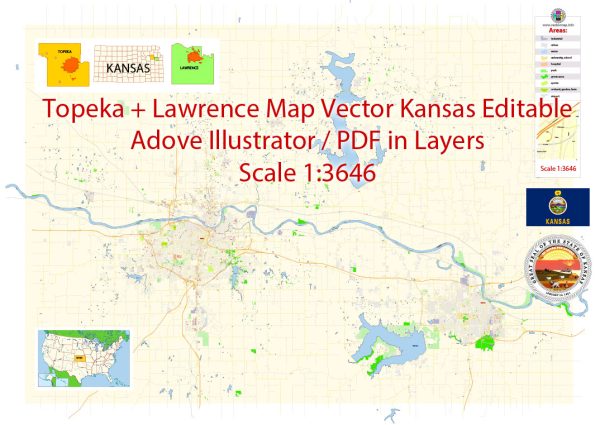Topeka and Lawrence are both cities located in the state of Kansas, USA. Here’s a brief ecological description of this region:
- Geography:
- Topeka is the state capital of Kansas and is situated in the northeastern part of the state.
- Lawrence is located approximately 25 miles east of Topeka and is home to the University of Kansas.
- Climate:
- The region experiences a continental climate with four distinct seasons.
- Summers in Topeka and Lawrence are typically hot and humid, with temperatures often exceeding 90°F (32°C).
- Winters are cold, with temperatures occasionally dropping below freezing, and snowfall is common.
- Flora and Fauna:
- The area around Topeka and Lawrence features a mix of grasslands, woodlands, and riparian ecosystems.
- Native plant species in the region include prairie grasses like big bluestem and little bluestem, as well as various wildflowers.
- Common wildlife species include white-tailed deer, wild turkeys, coyotes, and various bird species such as eastern bluebirds and red-tailed hawks.
- Waterways:
- The Kansas River (also known as the Kaw River) flows through both Topeka and Lawrence. It provides a source of water and supports local wildlife.
- Conservation Efforts:
- Both cities and the state of Kansas have various conservation programs and initiatives to protect and restore the natural environment. These efforts include preserving native prairies, managing riverbanks, and maintaining parks and green spaces.
- Urban Development:
- Urban development in Topeka and Lawrence has led to some habitat loss and fragmentation, but efforts are made to balance growth with conservation.
- Parks and Natural Areas:
- Both cities have parks and natural areas that allow residents and visitors to enjoy the outdoors. For example, Topeka’s Gage Park and Lake Shawnee offer recreational opportunities, while Lawrence’s Clinton Lake and the Baker Wetlands are popular spots for outdoor activities.
- Agriculture:
- Agriculture is an important industry in the surrounding areas, with crops such as wheat, corn, soybeans, and sorghum being cultivated in the region.
- Environmental Challenges:
- Like many urban areas, Topeka and Lawrence face environmental challenges related to air and water quality, waste management, and sustainable development. Efforts are being made to address these issues through various policies and programs.
In summary, the ecological characteristics of Topeka and Lawrence, Kansas, include a mix of native flora and fauna, influenced by the region’s continental climate. Preservation of natural areas, conservation efforts, and sustainable urban development are important considerations for maintaining the environmental balance in these cities.


 Author: Kirill Shrayber, Ph.D.
Author: Kirill Shrayber, Ph.D.